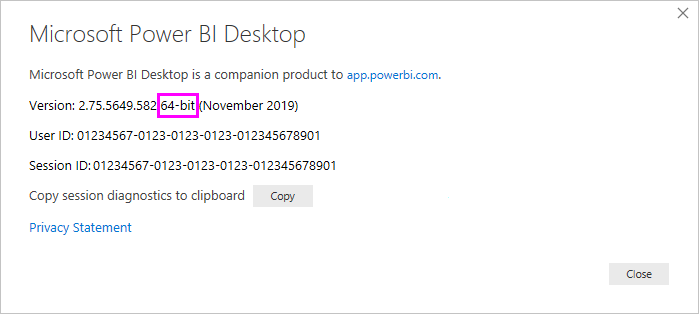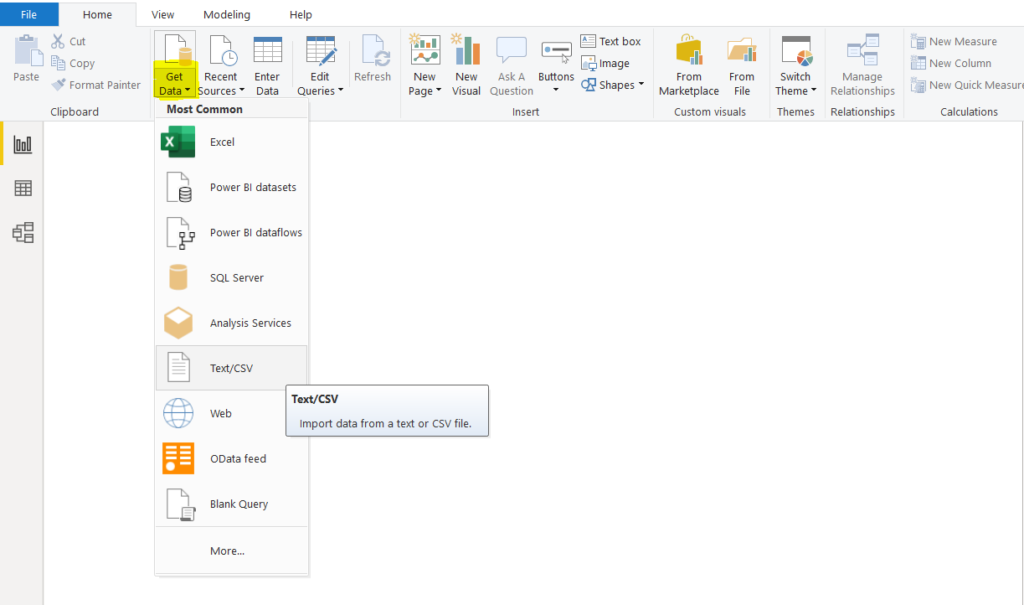

- #Oracle power bi download how to
- #Oracle power bi download update
- #Oracle power bi download password
Select the pie chart icon in the Visualizations pane.Follow the steps below to create a pie chart:

Create Data VisualizationsĪfter pulling the data into Power BI, you can create data visualizations in the Report view by dragging fields from the Fields pane onto the canvas. Otherwise, click Load to pull the data into Power BI.

When you click Close and Apply, Power BI executes the data retrieval query. Power BI records your modifications to the query in the Applied Steps section, adjusting the underlying data retrieval query that is executed to the remote Oracle data. Power BI detects each column's data type from the Oracle metadata retrieved by the connector.

Right-click a column header to perform actions like the following: In the Query Editor, you can customize your dataset by filtering, sorting, and summarizing Oracle columns. Select DirectQuery if you want to work with the remote data. Select Import if you want to import a copy of the data into your project.
#Oracle power bi download password
#Oracle power bi download update
To connect to Oracle, you'll first need to update your PATH variable and ensure it contains a folder location that includes the native DLLs. You can also use run the ConfigureODBC.exe tool located in the installation folder for the connector. Ensure that you run the version of the ODBC Administrator that corresponds to the bitness of your Power BI Desktop installation (32-bit or 64-bit). You can use the Microsoft ODBC Data Source Administrator to create and configure the DSN: From the Start menu, enter "ODBC Data Sources" and select the CData PowerBI REST DSN. Configure the DSN by filling in the required connection properties. This the name of the DSN that Power BI uses to request a connection to the data source. Installing the Power BI Connector creates a DSN (data source name) called CData Power BI Oracle. With built-in dynamic metadata querying, you can visualize and analyze Oracle data using native Power BI data types.Ĭonnect to Oracle as a Power BI Data Source When you issue complex SQL queries from Power BI to Oracle, the connector pushes supported SQL operations, like filters and aggregations, directly to Oracle and utilizes the embedded SQL Engine to process unsupported operations (often SQL functions and JOIN operations) client-side. The CData Power BI Connectors offer unmatched performance for interacting with live Oracle data in Power BI due to optimized data processing built into the connector. If you are interested in publishing reports on Oracle data to, refer to our other Knowledge Base article.
#Oracle power bi download how to
This article details how to use the Power BI Connector to create real-time visualizations of Oracle data in Microsoft Power BI Desktop. You can monitor Oracle data through dashboards and ensure that your analysis reflects Oracle data in real time by scheduling refreshes or refreshing on demand. The CData Power BI Connector for Oracle links your Power BI reports to real-time Oracle data. CData Power BI Connectors provide self-service integration with Microsoft Power BI.


 0 kommentar(er)
0 kommentar(er)
